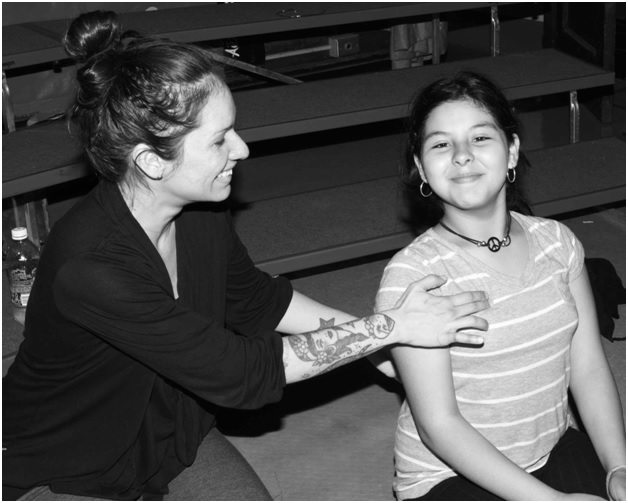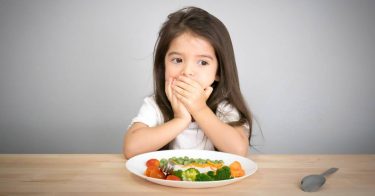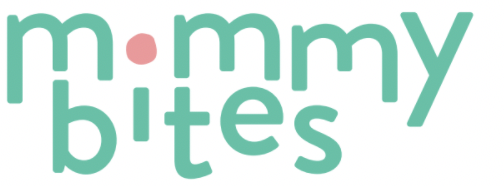
Take a deep breath. It’ll be alright. It’s just a doctor’s appointment. Breathe. It’s just a math test. Close your eyes, and take a few deep breaths. It’ll be okay. Just breathe.
Just breathe? But, how?
It’s ironic that something that we do automatically can sometimes be so difficult to do well. Have you ever caught yourself holding your breath before a performance or big exam? When we’re stressed or nervous, we sometimes forget to breathe -and that’s a problem. Children are also prone to anxiety and stress. And according to the American Psychological Association, these issues can cause problems for your little ones. Even more upsetting: if children don’t learn to effectively handle this anxiety, they may be unable to reach their full potential later in life. Signs of anxiety and stress include:
- Negative behavior changes, such as hostility
- Unexplained sickness, such as headaches and stomach aches
- Acting out
- Expressions of self doubt (i.e. saying they’re “not good enough”)
- Saying they’re “angry,” “annoyed” or “confused” because they can’t identify stress
- Classic panic attacks
One of the best ways to reduce and channel anxiety is through special breathing techniques. Below are some breathing tips that your child (and you!) can adopt to help combat anxiety:
Read Next | Career Options for Moms Returning to Work
Belly Breathing
This technique is recommended for children three to seven, although it’s still useful for older youths. Have your child lie on his back with both hands on his belly. Tell him to keep his mouth closed, and inhale slowly through the nose as he counts to eight in his head. Have him hold that breath for a count of two, and then breathe out slowly through the nose or mouth. In both instances, it helps if you count softly with your child. And make sure his belly goes up and down. This exercise can be repeated as many times as necessary. If you’re not sure if your child has done it enough times, ask how he feels. Even articulating their stress can help them control it.
Controlled Breaths
Another technique that’s handy for when there’s nowhere to lie down is controlled breathing.

Have your child place one hand on the chest, and the other just below the belly button as she takes several deep breaths. If done properly, this should expand the diaphragm, causing the hand on the belly to move forward more than the hand on the chest. This breathing technique is especially effective if coupled with other stress-reduction techniques, such as “progressive relaxation,” which involves alternately tensing and relaxing the muscles.
Mindful Breaths
Mindfulness is developing quite the reputation—and with good reason! Although commonly linked to meditation, mindfulness is actually, to a certain extent, a lifestyle choice that can include everything from deep breathing and meditation, to taking the time to smell the flowers and enjoy a meal. More specifically, it’s a way to focus on the present moment. A growing body of research indicates that mindfulness is a great way to promote psychological well-being.
Mindful breathing is just normal breathing! Except, this time, while your child is breathing – preferably while seated – encourage her to focus on how her breath feels, and how her body feels as she breathes. What kinds of sensations go through her arms and legs, torso and head? Is anything tense? Is she breathing normally, or is the breath hurried or gasping? This exercise helps your child to focus inwards, and to let go of stress. Another option is to integrate visualization into the exercise – ask your child to visualize a tranquil scene, like a beach or a mountain. Alternatively, if your child is a bit older and can grasp more abstract concepts, they can even imagine physically “letting go” of stress. When I was studying for my SATs, I was told to visualize putting all my stress in a bucket, sending it out to sea, and watching it disappear into the horizon.

Read Next | Everything You Need to Know about Kids’ Coughs
Something Structured
Finally, you can help your child deal with stress and learn to breathe better through yoga and meditation. There are plenty of options for yoga in most neighborhoods, and there are a myriad of free online guided meditation programs. Pick whichever suits your child! Learning to identify and deal with anxiety is part of growing up. And the first thing your child will do—before doing anything else—is breathing.
Other resources
Guided Meditation for Children by Annaka Harris
Susan Kaiser Greenland
4 Ways to Help Your Anxious Kid in the New York Times
Mindfulness for Children in the New York Times
3 Kid-Friendly Meditations Your Children Will Love
Photo credits: Hosh Kids at Hosh Yoga

Read Next | Better Understand Your Picky Eater
Laura Cofsky is the communications strategist for -and advisory committee member at -Hosh Kids. A recent University of Pennsylvania graduate, Laura has interned with The Philadelphia Inquirer, Fitness Magazine, Dow Jones, and USA Today. You can read her work on the Hosh Yoga and Hosh Kids blogs, and follow her on Twitter @LauraCky1.
Like what you read? JOIN the Mommybites community to get the latest on FREE online classes, parenting advice, events, childcare listings, casting calls & raffles, and our Parents With Nannies Facebook group. SIGN UP NOW!
The views and opinions expressed on this blog are purely the blog contributor’s. Any product claim, statistic, quote or other representation about a product or service should be verified with the manufacturer or provider. Writers may have conflicts of interest, and their opinions are their own.




Comments are closed.